© 2025 LaunchKU, All Rights Reserved
Thank you again for supporting our T. rex expedition in Montana last summer. Some of you were on the dig. Some of you helped fund our crew of paleontologists, students, and volunteers in the field, and then in the laboratory, preparing the parts of the skeleton we excavated for research and exhibit in the Museum. And some of you did both.
Today we are launching a new campaign to send David, Kyle, and many more researchers, students and volunteers back to the field to get more of this specimen to bring it home to KU. We hope you will join us with a contribution of $10, $25 or $100 for everything from plaster, glue and tools to travel and housing for the four-week expedition.
You have already helped us discover so much. We know that this T. rex died 66 million years ago on the floodplain of a river, its skeleton came apart and its bones were dispersed before they were buried and fossilized. We've learned this T. rex was a young female, a juvenile, and we are testing her bones for evidence of egg-laying. She had fights with other animals and survived, as evident from scars on the bones that healed. She may also be one of the oldest known T. rex specimens, geologically. A complete skeleton of this T. rex would be 40 feet long and stand 13 feet high.
We are returning to Montana in June to recover more of the fossil. During the first few days, we will rent a backhoe and hire an operator to remove the substantial “overburden”—the rock layers covering the bone bed, particularly from the cliff to the east where we found the femur (thigh bone) of the T. rex last summer. We are asking you to help fund our third field season in Montana -- send us there to bring back even more of this specimen by giving at http://www.launchku.org/TrexKU.
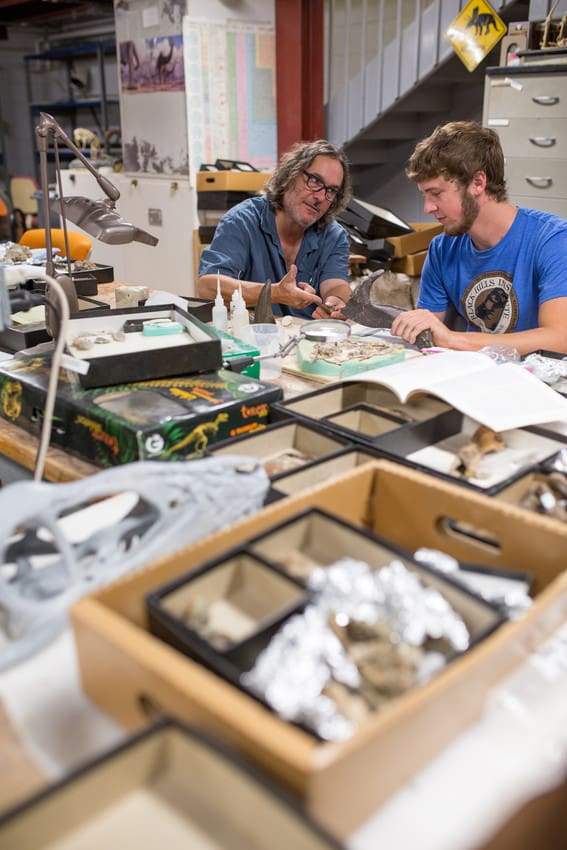
Thank you so much for supporting our campaign to bring the KU T. rex home to the KU Natural History Museum. The campaign has exceeded its goal -- donors like you have raised $24,730 for the expedition! Every gift above what was needed for the 2016 expedition will support our T. rex research, graduate education and exhibition.
Today we announced the campaign's success so far -- and how a passion for dinosaurs got it started. Read on for more, and thank you again for supporting #TeamTrexKU! -Jen
Enthusiasm for Dinosaurs Fuels Fundraising Campaign and Expedition You can tell when you talk to KU paleontologist David Burnham that he is anxious to return to the dig site of a Tyrannosaurus rex.
Rains have made parts of the two-track road that leads to the site impossible to pass for two days. And the clock is running: the KU paleontology expedition in Montana will stop at the end of July.
Still, calling in from the small hotel in Jordan, Montana, where he is waiting out the weather, Burnham beams about what has been found so far: 37 fossil fragments including teeth and part of a lower jaw.
“It’s a matter of following the debris field, bit by bit,” he said.
Burnham is leading an ever-changing roster of volunteers, students and staff for the nearly four-week expedition. The team’s goal is to add to the fossils already previously recovered at the site and displayed at the KU Natural History Museum. To date, 15 percent of the fossil has been found at the Hell Creek Formation site since excavations began there in 2006.
A crowdfunding campaign – the museum’s first for an expedition – and a family with a passion for paleontology made the expedition possible.
The campaign, “Bring the KU T. rex Home,” began in May with a goal of raising $16,700 to fund the expedition. More than 80 donors have pushed the total raised to $24,730. Funds raised in excess of this particular expedition’s needs will support more T. rex research at KU, the exhibition of fossils, and the involvement of students in the project.
A plastic Tyrannosaurus rex has been a mascot for the campaign and the museum has featured it through events and social media such as the museum’s Facebook page. As the fundraising effort draws to a close this week, the tiny T. rex will be packed up and head north to Montana with museum staff, where it will be featured at the excavation it has helped inspire.
Leonard Krishtalka, director of the KU Biodiversity Institute, said the campaign would not have been a success without KU student Kyle Atkins-Weltman and his parents, John Weltman and Cliff Atkins of Boston, Mass. They were the first and lead supporters of the project.
Kyle, a biology student who works in the herpetology department at the Biodiversity Institute, said he has been passionate about dinosaurs all of his life. He is a leading contributor for Dinosaur Battlegrounds.
“Paleontology is the ideal kind of work for me,” Kyle said. “I am comfortable working on the same thing for hours; you get into a zone. So slowly seeing something jutting out of the rock, and seeing it slowly reveal itself, is exciting to me.”
Cliff and John said Kyle fueled their enthusiasm for the project.
“When you have children, you want to invest in the things that excite them,” John said. “We also believe strongly in supporting education. And whatever knowledge one gains from the excavation – we wanted to help that on a broader scale.”
The family plans to volunteer at the dig site in July, he added.
“Kyle has gotten us so interested in dinosaurs,” John said. “I love Jurassic Park. I feel like an 8 year old – I’m excited to volunteer at the site.”
In Montana, Burnham is hoping a forecast for sunny weather next week will hold true.
“I wake up full of excitement every day knowing that a discovery isn't too far away,” he said. “All the pieces we find are clues leading us closer. The only obstacle is the hard stubborn rock, but I know we must move slowly and carefully, as the next bone could be anywhere.”
Thanks to you, the KU paleontology team is headed to Montana. The Bring the KU T. rex home project is 96% funded, with 13 days to go. Thank you for giving for this effort! We plan to post regularly through the museum's social media as the group makes its way to Montana, sets up the dig site and assesses the weeks ahead.
The more we raise, the longer the team stays, the more resources we have for T. rex research and the more of the specimen we can display at the KU Natural History Museum. If you know someone who would be interested in this project, share this link with them and help put us over the top of our goal.
Below are photos David Burnham and Ft. Hays State University student Kris Super. Both packed up the rental truck and headed to Montana Friday. Photos provided and copyrighted by KU Marketing and Communications. -Jen
Jen Humphrey Director of External Affairs KU Biodiversity Institute KU Natural History Museum biodiversity.ku.edu
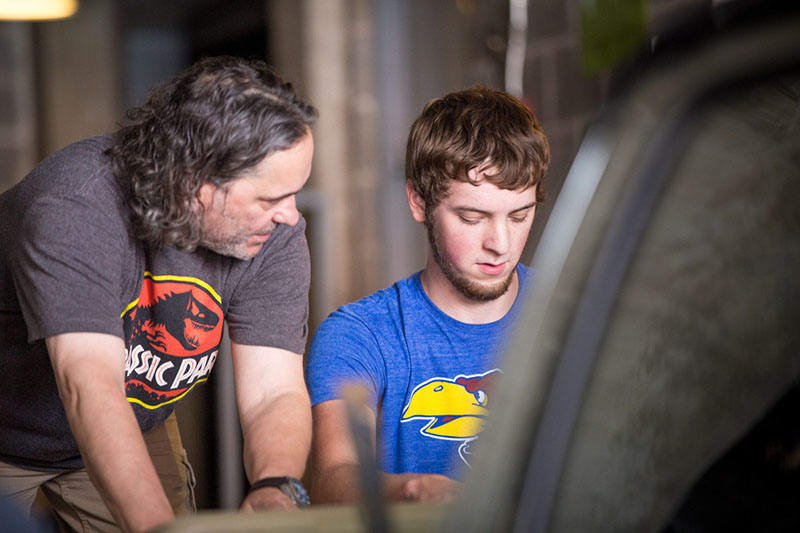
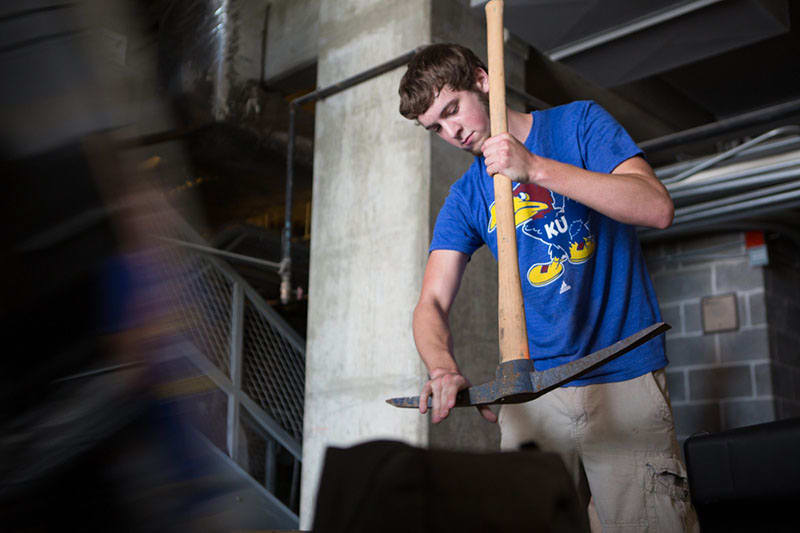
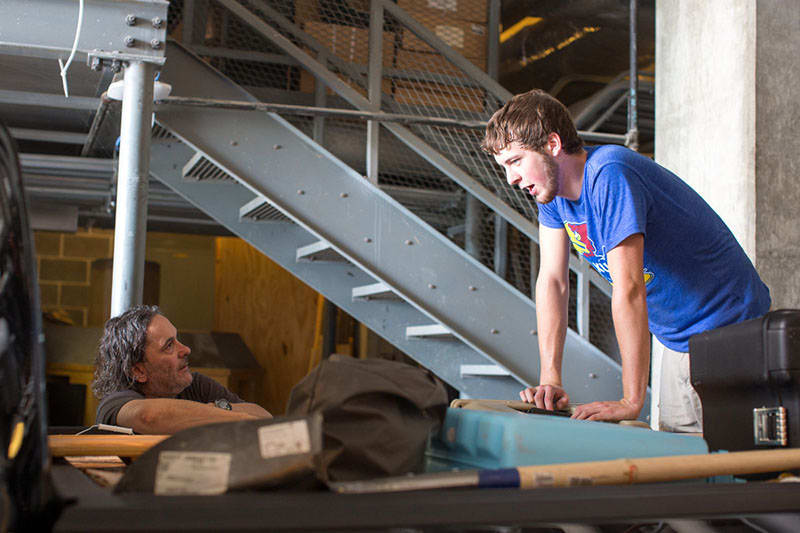
Thank you to everyone who has supported this campaign: today we are at 77% of our goal of $16,700. The paleontology team, including David Burham and students, are making plans for the Montana expedition to bring home the KU T. rex -- but their success relies on people like you, and the people you tell about the T. rex campaign. So we hope you will share your enthusiasm for this project. Tell others you support it, and encourage them to do the same. Every $5 or $15 will help us meet our goal. How much can you help us raise by Father's Day?
And here's a little T. rex Tuesday inspiration. Follow us on Facebook and Twitter for more T. rex Tuesday fun.
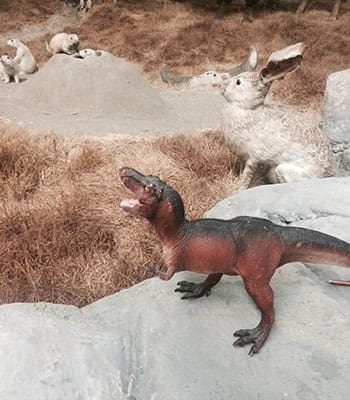
Thank you so much for your support for our campaign to bring the T. rex fossil home to KU. As the week progresses, I hope to share news with you about the paleontology team and their preparations to get to Montana -- with your help, of course!
But first I want to share with you what excites me about this fossil find: we already have 15% of the specimen from nose to tail. That includes a jaw with teeth, neck bones, back bones, ribs, parts of the legs and a complete foot.
Paleontologist David Burham, who is leading this expedition, noted that no one has ever found 100 percent of any dinosaur.
At the KU Natural History Museum, we already have much of this specimen on display, but maybe not in the way that you think. The fossils are presented in a large, long exhibit case that shows how scientists such as David and our graduate students are solving the mysteries of this particular fossil -- including observations about its age, size, and health.
Someday, I hope we can display even more of this specimen. Maybe we'll find so much material that we can't fit it in a case anymore.
With support from people like you for the expedition we'll learn more about this specimen and bring it home to KU. Please tell your friends and family about this campaign -- we are at more than 67% of our goal! Help us get there. Thank you, -Jen
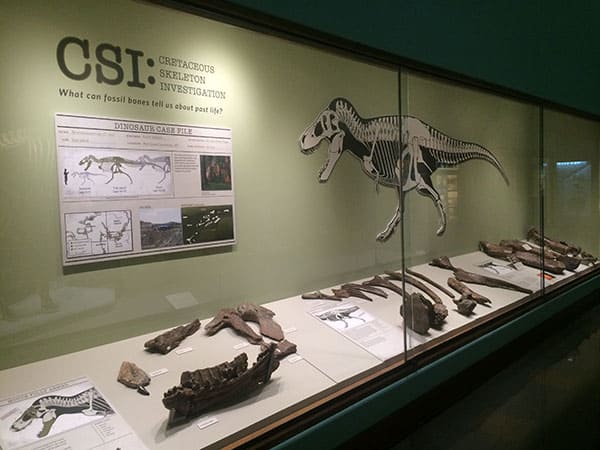
Hello! We're excited to kick off our campaign to send a KU paleontology team to Montana to excavate more of a Tyrannosaurus rex fossil and bring it home to KU. Our goal is to raise enough funds for the four-week expedition. Maybe we'll raise enough to continue working on exhibiting the KU T. rex -- but that's up to dinosaur and science fans like you.
I have a T. rex in my office at KU. Just a cardboard version, but it looms as large in the room as T. rex does in our our culture and imagination. There's a good reason that the water scene from Jurassic Park is one that stays with you years after you’ve seen it: we can all picture the terror of such a giant looking at us as the next tasty meal.
But at the museum, this isn’t about Hollywood’s version of a T. rex. It’s about science. We want to know more about this particular T. rex, and we want to know what it tells us about others and the environment in which it lived, and died. That means going back to the dig site to look for more of this exciting find. I hope you’ll join us over the next 8 weeks during this campaign, and watch our progress. We can’t wait to get started. -Jen
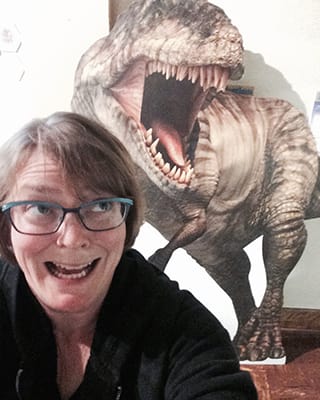
This is your chance to say that you helped send a paleontology team from KU to Montana to collect a Tyrannosaurus rex — and bring it home to the KU Natural History Museum.
Did you know that Barnum Brown, the paleontologist credited with discovering a T. rex in the Hell Creek formation in the 1800s, was a KU alumnus? Help us send a modern-day team of KU scientists and students to follow in his footsteps.
Paleontology is often putting together the pieces of a puzzle. We already have part of this puzzle solved: scientists have 15 percent of the T. rex. Help us chip away at this puzzle and bring home more of this amazing fossil.
Imagine being a student who gets to go to Montana to bring back parts of a T. rex. Your gift of $100 or more will give them a field experience of excavating and preparing fossil material that they won’t forget.
During the 2015 expedition, we hired someone to use heavy equipment to remove the top of the hill, revealing the fossil layer. Help us dig deeper and bring the T. rex fossil back to KU with your gift of $100 or more.